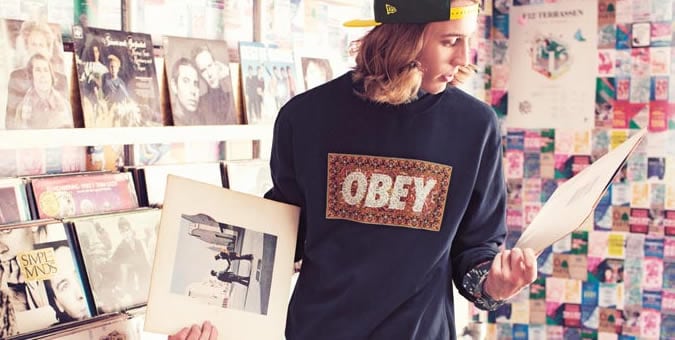In the world of streetwear, few brands have managed to carve out as distinct and enduring a visual identity as Obey Clothing. Since its inception in 2001, the brand has become synonymous with bold, politically charged graphics and a rebellious spirit. This blog post delves into the art of Obey Clothing prints and patterns, exploring how these elements contribute to the brand’s unique aesthetic and cultural impact.
Visit: Obey Clothing
The Origins of Obey Clothing
Obey Clothing was founded by artist and designer Shepard Fairey, who initially gained notoriety through his “Andre the Giant Has a Posse” sticker campaign in the late 1980s. This guerrilla art project evolved into the Obey Giant campaign, characterized by its provocative and visually arresting designs. Fairey’s background in street art and his engagement with social and political themes laid the groundwork for Obey Clothing’s graphic identity.
The Signature Aesthetic
Obey’s prints and patterns are instantly recognizable, often featuring bold typography, striking color palettes, and a mix of influences from propaganda posters, punk rock, and pop art. The brand’s graphics are not just decorative; they convey messages and provoke thought, reflecting Fairey’s belief in the power of art to inspire social change.
Iconic Prints and Patterns
- Obey Giant Face: Perhaps the most iconic element of Obey’s graphic repertoire is the stylized face of Andre the Giant. This image, often accompanied by the word “Obey,” has become a symbol of the brand’s ethos—challenging authority and questioning societal norms.
- Political and Social Commentary: Many Obey prints incorporate themes of dissent and activism. Posters and apparel featuring images like “Make Art Not War” and “We the People” highlight issues ranging from peace and equality to environmentalism. These designs are often layered with intricate details, drawing from Fairey’s background in screen printing and stencil art.
- Patterns and Repeats: Beyond standalone graphics, Obey also excels in creating patterns that merge street style with fine art. Repeated motifs, such as baroque-inspired floral designs or geometric shapes, add a sophisticated yet edgy touch to their clothing. These patterns often juxtapose classical art references with modern street culture.
The Creative Process
Shepard Fairey’s creative process involves a blend of traditional and digital techniques. He often starts with hand-drawn sketches or manipulated photographs, which are then digitized and refined using graphic design software. This combination of analog and digital methods allows for a depth and richness in the prints, giving them a handcrafted feel even when produced at scale.
Cultural Impact
Obey Clothing’s prints and patterns do more than just make a fashion statement; they engage with cultural and political dialogues. By wearing Obey, fans align themselves with a brand that stands for more than just style. It’s about making a statement, sparking conversations, and being part of a movement.
Conclusion
The art of Obey Clothing prints and patterns is a testament to the power of visual storytelling in fashion. Through bold graphics and meaningful messages, Obey continues to push boundaries and inspire change. Whether you’re drawn to the striking imagery or the deeper social commentary, wearing Obey is about more than just clothes—it’s about making a statement.
As the brand continues to evolve, one thing remains clear: Obey Clothing will always be at the intersection of art, fashion, and activism, using its prints and patterns to challenge the status quo and inspire a new generation of rebels and dreamers.
Visit: https://obeyclothing.online/
